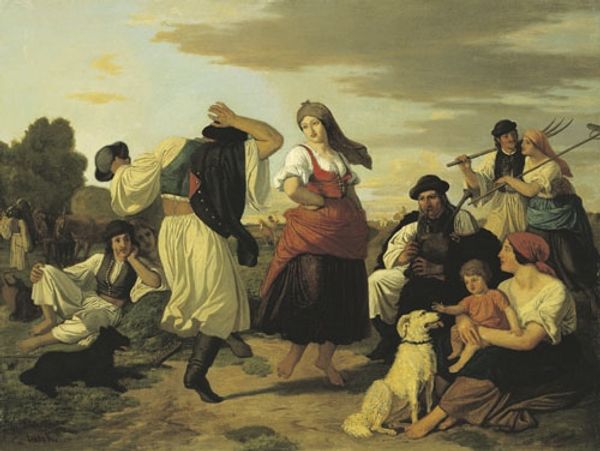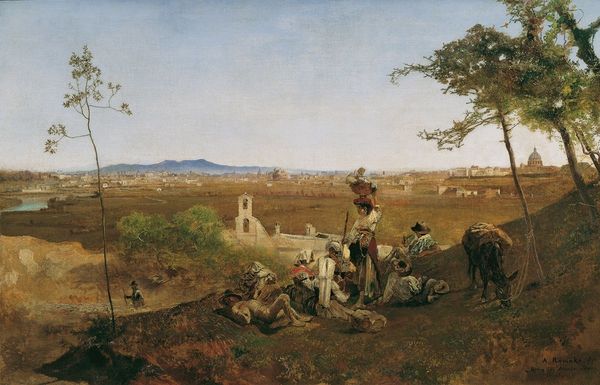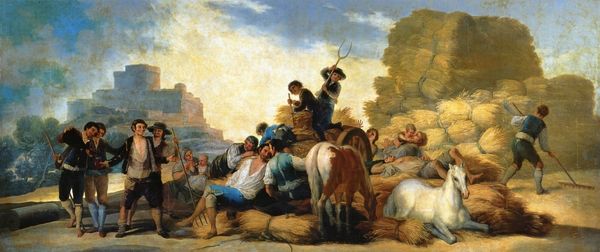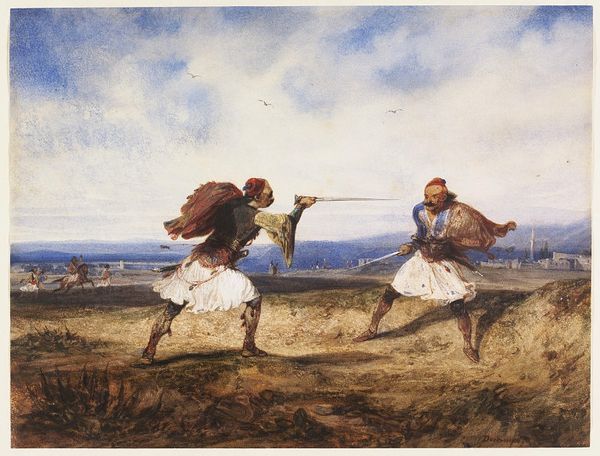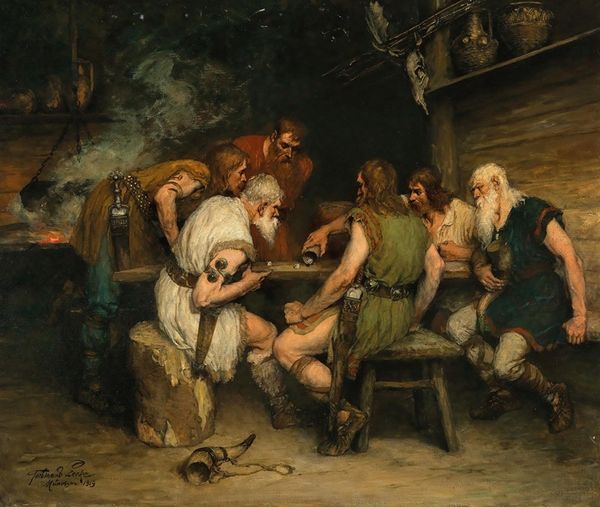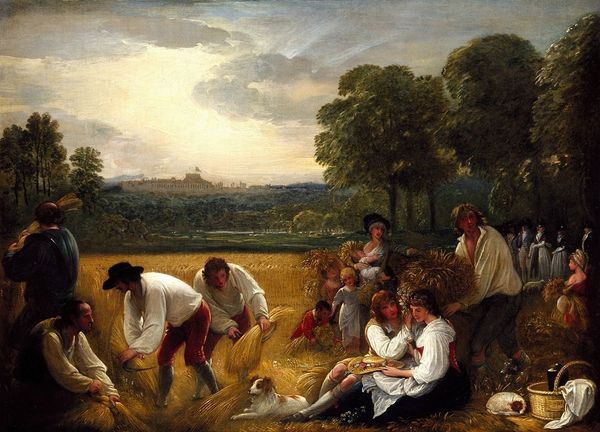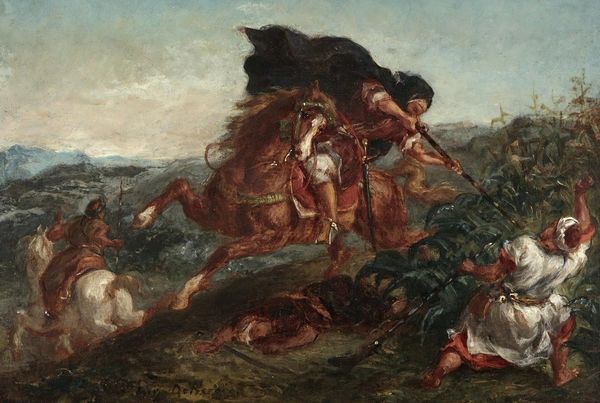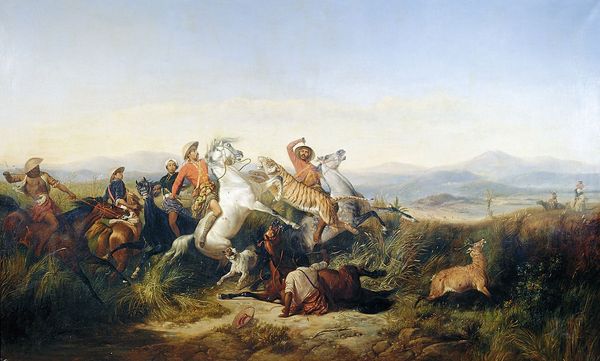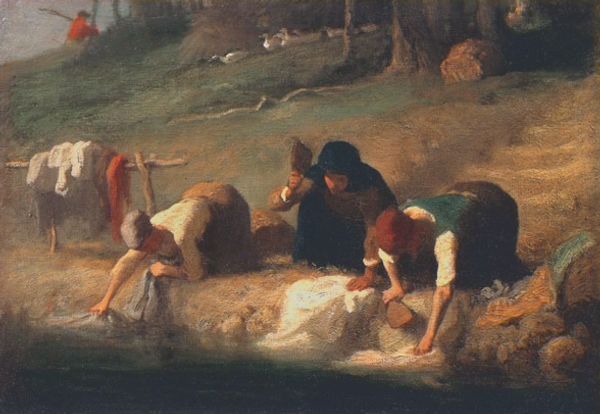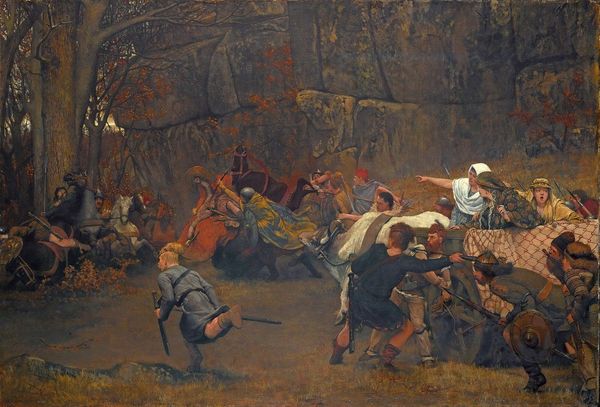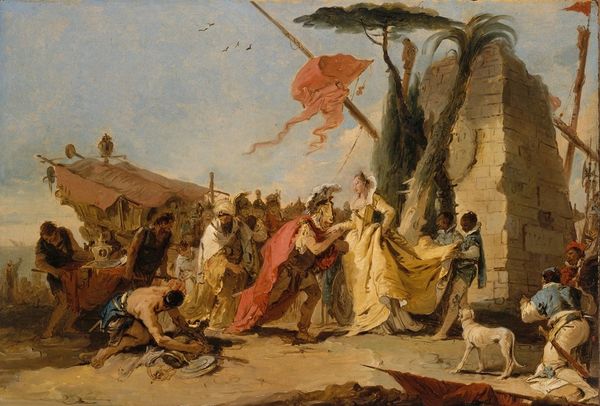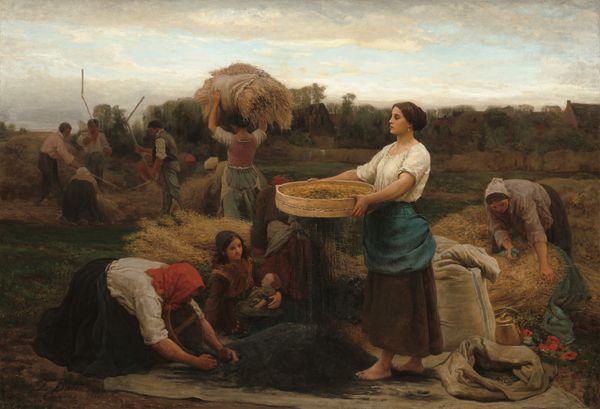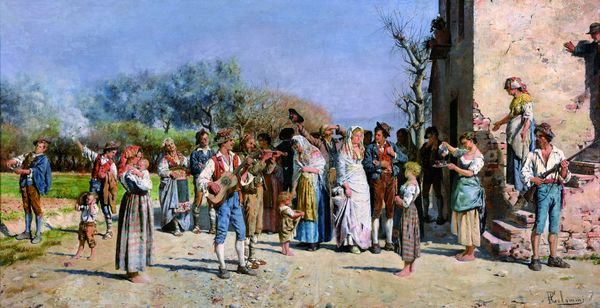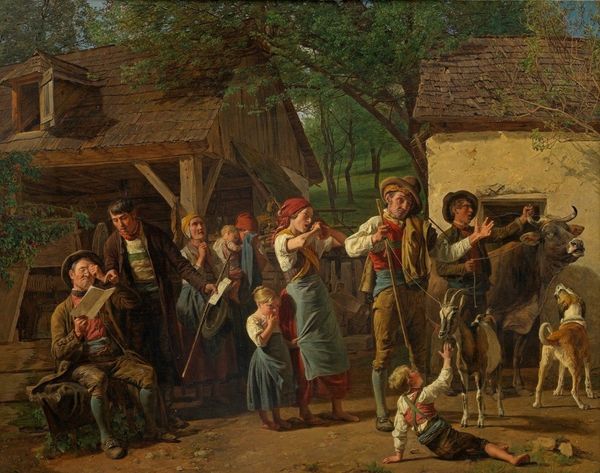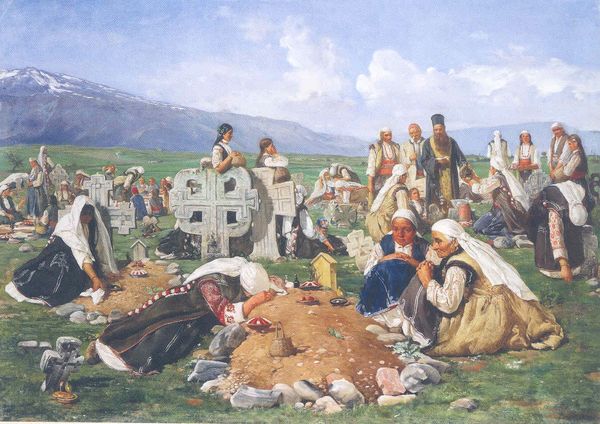
The Vintage in the Claret Vineyards of the South of France Possibly 1847 - 1848
0:00
0:00
Dimensions: support: 787 x 1549 mm
Copyright: CC-BY-NC-ND 4.0 DEED, Photo: Tate
Editor: Thomas Uwins' "The Vintage in the Claret Vineyards of the South of France" showcases a lively scene. What stories do you think the symbols in this painting are telling? Curator: Consider how the grape harvest, a recurring motif, symbolizes abundance and celebration, and in religious contexts, transformation. The attire and tools also tell a tale about social roles. Editor: So, it's not just a depiction of labor; it's steeped in cultural meaning. Curator: Precisely! The artist taps into the rich vein of symbolic language embedded in everyday life, inviting viewers to decode a deeper narrative. Editor: I see the image now as more complex and layered. Curator: It's a reminder of how visual elements contribute to our understanding of the past.
Comments
tate 8 months ago
⋮
http://www.tate.org.uk/art/artworks/uwins-the-vintage-in-the-claret-vineyards-of-the-south-of-france-n00387
Join the conversation
Join millions of artists and users on Artera today and experience the ultimate creative platform.
tate 8 months ago
⋮
Uwins first recognized the pictorial possibilities of harvesting while on a visit to the hop-fields of Farnham, Surrey, in 1811. His ambition to paint an important vineyard subject probably dates from this period. In 1817, after the Napoleonic Wars, he travelled to Bordeaux intent on painting the grape harvest. Living with the Cabareuss family in the claret country of the upper Medoc, he found the countryside 'detestable; it is literally a sea of vines extending every way to the horizon'. 'The Vintage', for which some of his 1817 sketches were used, was the result of a second visit in 1846. Vernon acquired the picture after its exhibition in 1848. Gallery label, September 2004
